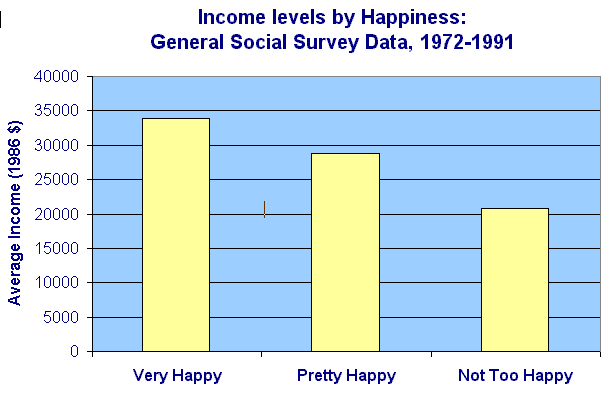

The other day, I took city transit home after a long summer's day at work. It gets pretty hot here in the desert, and I was happy to ride home in the refreshing air-conditioned bus.
As I sat down, I noticed a pamphlet on the cushion beside me. The cover, featuring a multiethnic set of people looking off into the distance, bore the phrase "What is the Purpose of Life? How Can You Find It?". Sounds like a good read, I thought as I picked the pamphlet and began to peruse it.
It turns out I'd succumbed to the wily ways of the Jehovah's Witnesses. As I looked up from the pamphlet, I noticed that at least a dozen like it were strewn across the bus. These were left for bored riders like me to pick up.
Now, there's nothing inherently wrong with that. As a matter of fact, I rather admire the gumption of individuals who exercise free speech in new and inventive ways. And while I don't agree with the message of the Jehovah's Witnesses, that's not my particular beef, either.
What is really bothersome about this pamphlet and others like it are the subtle and not-so-subtle tactics of persuasion employed by the authors. These tactics are used to bolster an argument that cannot be sustained by other means. Although "What is the Purpose of Life?" attempts to convert new believers by the discussion of fact and the force of logical argument, it deals in falsehood and uses some of the oldest dirty logical tricks in the book.
Rather than playing fair, this pamphlet tries to win you over using linguistic tricks. One of the oldest tricks in the book is to slip a tainted word into an argument quietly, then depend on that word to make your case. Let's get specific; here's a passage from the pamphlet that uses this trick in a classic "teleological argument":
Who can tell us what the purpose of life really is? Well, if you were to visit a machine designer and saw him working on a complicated piece of machinery that you did not recognize, how could you find out what it was for? The best way would be for you to ask the designer.
What, then, of the magnificient design we see all around us on earth, such as in all living things, down to the smallest living cell? Even the much smaller molecules and atoms inside the cell are wonderfully designed and orderly. What, too, of the marvelously designed human mind? And what of our solar system, and our Milky Way galaxy, and the universe? Did not these awesome designs require a Designer? Surely he could tell us why he designed such things.
Well, hey, this argument seems at first glance to make some kind of sense. Notice the use of the word "design" here, however. It's very important in the argument. How? Well, let's refer to the definition of the word design (thanks to Webster!):
Design:verb
Notice something about all of these definitions? All of the verbs are active, involving someone carrying something out. All but one of the nouns assume purpose as well, someone to plan, scheme, aim, arrange or invent. Definitionally speaking, the word "design" implies a "designer".
By slipping the word "design" into their argument, the Witnesses make the conclusion of their argument inevitable. Once the reader accepts that design exists, there must be a designer by definition.
The one exception to this definitional rule involves the definition "pattern." A pattern does not imply purposeful action of any kind. While design requires a designer, a pattern most definitely does not require a patterner.
Here's where the trick of the teleological argument lies. When beginning their argument, the Jehovah's Witnesses use the "pattern" definition of the word "design". They ask us to marvel at the patterns we see in the universe. But by using the word "design" they appeal to our linguistic knowledge. We linguistically accept that the word "design" implies pattern, but we also linguistically accept that the word "design" implies a designer. The reader is expected to accept the argument because it makes linguistic sense, not because it makes logical sense.
To make this point clearer, let's replace the word "design" with "pattern", and repeat the Witnesses' argument:
What, then, of the magnificient pattern we see all around us on earth, such as in all living things, down to the smallest living cell? Even the much smaller molecules and atoms inside the cell are wonderfully patterned and orderly. What, too, of the marvelously patterned human mind? And what of our solar system, and our Milky Way galaxy, and the universe? Did not these awesome patterns require a Patterner? Surely he could tell us why he patterned such things.
With the simple replacement of a word with its functional synonym, the argument is exposed as nonsense. Of course a pattern doesn't require a patterner. We now can think of many counter-examples. A crack in a roof permits tiny drops of rain to fall on my head, but not large palm fronds. That's a pattern - was it purposefully designed by an architect? No; in fact, my house's architect would probably be embarassed to observe such a pattern. Rocks on a mountaintop are often sharp and uneven. Rocks in a riverbed, on the other hand, tend to be smooth and even. That's a pattern; did someone make the pattern occur intentionally, perhaps with a lot of steel wool? Of course not; it's the result of a natural, nonconscious process. The teleological argument falls flat on its face once its definitional cover is taken away. The Witnesses have relied on a trick couched in the language of logic to sway readers.
British astronomer Sir Bernard Lovell, referring to the chemical composition of living organisms, wrote: "The probability of...a chance occurrence leading to the formation of one of the smallest protein molecules is unimaginably small.... It is effectively zero."
Similarly, astronomer Fred Hoyle said, "The entire structure of orthodox biology still holds that life arose at random. Yet as biochemists discover more and more about the awesome complexity of life, it is apparent that the chances of it originating by accident are so minute that they can be completely ruled out. Life cannot have arisen by chance.
....And a professor of physics, Chet Rayno, states: "I am dazzled...Every molecule seems miraculously contrived for its task."
Elsewhere, the pamphlet cites luminaries as varied as Jimmy Carter, Elie Wiesel and Stephen Jay Gould. The use of famous and respected people to bolster an argument is called the ad hominem trick: those who respect cited figures are less likely to disagree with their claims.
There are two problems with the ad hominem trick. First, the basis for people's respect of famous figures like those cited above is often very specific. That means their expertise is limited. What do astronomers and physicists know about the biochemical composition of living organisms? Not much, because they aren't biochemists! The reference to these high status individuals is meant to browbeat the reader into thinking that they must be right, simply because they're smart enough to have earned a PhD. This is a sloppy argument.
The second problem is one of omission: a reference to authority in this case replaces the solid foundation of careful, rational argument. The Witnesses make the mistake of embracing rational argument for the purposes of conversion and at the same time abandoning it when rational argument leads to undesirable conclusions, or simply when easier tactical maneuvers suffice.
Faced with increased prosperity, "What is the purpose of life?" tries a new twist. The pamphlet argues that money can't buy you happiness:
"Many people in both Eastern and Western lands feel that the main purpose in living is to acquire material wealth. They believe that this can lead to a happy, meaningful life. But what of people who already have material wealth? Canadian writer Harry Bruce said: "A baffling number of rich people insist they are not happy." He added: "Polls suggest a terrible pessimism has infected North America...Is anybody happy out there? If so, what's the secret?"
Indeed, what is the secret? A reader of this pamphlet would understandably conclude that money isn't the secret, and might therefore be more susceptible to religious arguments later on. The problem is that the Jehovah's Witnesses have perpetuated a factual falsehood to prop up their arguments. Check out this figure:

This figure shows the average income of people who reported being "very happy," "pretty happy," and "not too happy" on the General Social Survey from 1972-1991. It looks like the happiest people are also the richest, while the least happy are also the poorest. Money, it seems, does buy happiness. And if money can buy happiness, who needs religion?
The Witnesses point out these trends for two reasons:
This second reason is interesting because it suggests a social theory of Armageddon: a rise in the factors outlined in the Book of Revelation leads to a rise in the probability of Armageddon, which means you'd better repent pretty quick.
What would this social theory of Armageddon say about the probability of God's Kingdom in the next few years? While it is certainly true that crime, drug abuse, disease, divorce, hunger and earthquakes are bad things (although divorce certainly isn't always bad) that occur in our lives, the Witnesses' main factual error is to assert that these things are especially nasty in our current time. They aren't; if anything, these trends are positive. Let's look at their factual claims one by one.
Earthquakes
Matthew 24:7, as the pamphlet points out, predicts that in the days of the
apocalypse, "there will be food shortages and earthquakes in one place after
another." Translated into the language of the social theory of Armageddon,
an increase in hunger and an increase in earthquakes each lead to an increase
in the probability of Armageddon.
Let's consider earthquakes. Are they on the rise? Not according to the U.S. Geological Survey. They point out that the average number of "major quakes" of Richter strength 7-7.9 across the world for the 20th century overall is 18 per year. But since 1969, the globe's averaged only 13.9 major quakes per year. The global average number of earthquakes in the 20th century for "great quakes" of 8 and above Richter strength is once per year. But since 1969, the globe has had fewer "great quakes," at the rate of one every year and four months. In other words, earthquakes have lately been on the decline.
Hunger
What about hunger? Hunger is undeniably a pressing problem in the world,
but is hunger on the increase? Peter Uvin's review piece,
The State of World Hunger, provides information on the calories of food
available to the average person in various regions of the world. Let's look at
the dietary energy (calories) available per person in various regions of the
world over time:

As this image shows, caloric intake has increased over time. Other research
has demonstrated that the percentage of those "chronically underfed" in the
world has decreased from 36% to 20% in the years from 1970 to 1990. As Uvin
puts it:
The picture that emerges, then, is more positive then generally
assumed: the incidence of hunger in the world has declined significantly, and fewer people are undernourished now that 15 years ago, notwithstanding the addition of approximately 1.1 billion people to the Third World's population.
Of course, when 20% of the world's population is underfed, we should be upset and angry. But the point here is that, contrary to the claims of the Jehovah's Witnesses, hunger is on the decrease, not an apocalyptic increase.
Disease
The Jehovah's Witnesses cite two trends heralding the second coming: an increase in sexually-transmitted disease and an increase in disease in general.
Unfortunately, they're wrong on both accounts.
The Centers for Disease Control and Prevention keeps track of sexually-transmitted diseases in the U.S. over time. They include AIDS, Gonorrhea, Syphilis and other sexually transmitted diseases in their count. What's the trend? In 1970, there were 693,200 observed cases of STDs. In 1980, the total peaked at 1,074,000. At the time when Ronald Reagan proclaimed it was "morning in America", a lot of people must have been ruing the night before. Since then, the STD total has decreased: 989,600 in 1985, 870,100 in 1990, and only 534,100 by 1995, the last year for which statistics are available.
Well, if STDs aren't on the increase, maybe disease in general is on the rise. Or maybe not. Let's look at three trends: the rate of infectious and parasitic diseases in general, the rate of digestive system diseases and the rate of injuries. I didn't pick these three out of a hat, by the way; they're the three categories described since the 1970s in a great book of general statistics, Statistical Abstract for the United States.
So what's the trend?

All three categories of illness have decreased over time. The Witnesses are wrong again.
Drug Abuse
Oh, well. Maybe at least the Witnesses got it right when it comes to drugs. After all, everyone else is always talking about how the drug problem is spiraling out of control, right? Mind you, we're not talking here about drugs, the chemicals we use for medical purposes on a routine basis, we're talking about druuuuuugs, the chemicals that, if you use them, will immediately cause lunacy. Cynicism aside, the Witnesses describe an epidemic of increasing drug use. Is this the case? Again, let's look at data from the Statistical Abstract for the United States.
Here's the trend for various drugs:

Gee, looks like if there's a trend at all, it's for a decrease in drug use over time. Makes you wonder what the fuss is all about, doesn't it? At any
rate, if a flood of drug-induced frenzies is supposed to signal Armageddon, it ain't coming soon.
Divorce
Let's look at divorce. Remember the social theory of Armageddon: as divorce increases, Armageddon becomes more likely. What's the scoop on divorces? To answer this question, we look at the divorce rate, the number of divorces per 1,000 people in a given year. The following graph tracks the U.S. divorce rate over time:

According to this data, the divorce rate peaked in the early 1980s. If there ever was a time for the coming of God's Kingdom, the early 80's would have been it. Since then, the divorce rate has been on the decline. By 1996, the last year for which data is currently available, the divorce rate was
at its lowest in twenty-three years. If divorce is truly a herald, don't look
for the four horsemen just yet!
Crime
The authors of the pamphlet assert that "Everywhere,
there is a rise in crime, especially violent crime" and that
"Disregard for life and property grows." Is this true? Let's
consult the FBI's Uniform Crime Reports.
The latest available crime statistics, those for 1998, show that the number
of both violent and property crimes decreased that year, by seven
percent in each category. What's more, the total number of crimes committed
has decreased for seven consecutive years. The number of crimes is at its lowest point in fourteen years.
But wait, it gets even better. The crime rate is a more accurate record of trends over time, since numbers of crimes can rise or fall simply as the number of people rises or falls. By measuring the number of crimes committed per person, the crime rate takes these changes into account and more clearly measures the average person's experience of crime. Guess what? The crime rate measured by the FBI is at its lowest point in twenty-five years. This information, which is widely available, directly contradicts the Witnesses' apocalyptic claim.
The Jehovah's Witnesses' social theory of Armageddon is certainly interesting. Unfortunately, its predictions are not borne out by empirical reality. This represents a trend in the Jehovah's Witnesses' literature to lay out arguments and make bold claims about the way things are, while those bold claims fail to meet the standards of truth.
Now, there are certainly a few problems with the line of argument. The biggest problem is that if we should act according to the "true nature" of the world, we shouldn't be subscribing or unsubscribing to world views just because it makes us happy -- we should behave according to the way things are. In addition, it might be more holy to act according to a moral code rather than to act in a self-serving manner. But the Jehovah's Witnesses have introduced these weaknesses in their own argument. In trying to prove a point, they've strayed from the path of "truth" and moved on to hucksterism: if you buy into my religion, you'll get happiness you can't get elsewhere. The Witnesses not only sell their soul here, but they do it making a claim that isn't even factually correct. Whoops!
The general pattern of persuasion in the Witnesses' work is clear: by hook or by crook, through poor logic, by omitting facts, by the presentation of outright falsehood, by any means necessary, conversion must occur. For an organization that prides itself on its own perceived moral rectitude, this is a shameful approach that must be confronted. Remember this article the next time you hear that familiar knock on your door, then try out a few of these points on 'em. You'll help to replace deception and manipulation with factual accuracy and plain sense.
This Freethought Ring web site is brought to you by Irregular Jonathan Speaks.
[ Next | Skip It | Next 5 | Prev | Random | info].
Respond to our challenge -- Can you prove that the Bible is the word of God?
Find out more about religious skepticism
Take a trip to Atheist Books
